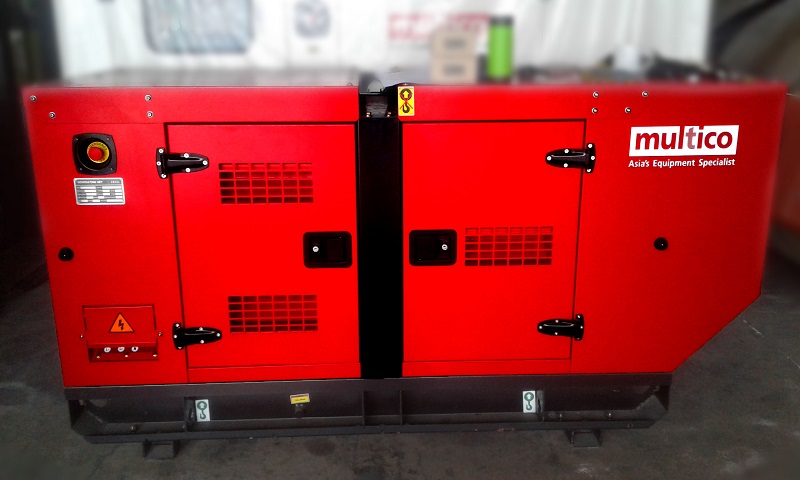
How to Identify the Perfect Type of Generator for Your Needs
June 28, 2018
What factors do you have to consider when choosing the perfect type of generator for your needs?
- Generator output
- Fuel type
- Mobility
- Power delivery
In an era where we always have to be digitally connected, blackouts are now one of the worst things that could happen to us. The instant we lose power, we get disconnected from the rest of the world and we feel uneasy. Not a lot of people can stand being offline and having their phones, tablets, laptops, and other gadgets die on them. For this reason, having a generator set in the Philippines is slowly becoming a necessity.
We don’t often realize it but having enough power to light our homes is one of the greatest luxuries that we get to enjoy. Unfortunately, it can be taken from us any moment. Our power grids are becoming less and less reliable and blackouts are bound to happen more frequently and last a lot longer. Calamities and disasters are also just around the corner waiting to hit our islands and cut our power supplies.
Luckily, you can counter these power outages by fitting your homes or establishments with a generator set. But with so many to choose from, how do you identify which type is perfect for you. There are actually a lot of things to consider when choosing a generator set for your needs and we’ve listed them all below.
Generator Output
Every generator has a different level of output and in order to choose the best one, you first have to determine the amount of running and starting watts you need. The first step to accomplishing this is selecting the items/appliances you wish to power simultaneously during an outage. List each item’s respective running and starting watts, which you can find on its data plate or owner’s manual.
You then need to add all the running watts. After which, look for the item that has the highest additional starting watts and adds that to the total sum of running watts. You should end up with two numbers, the total sum of running watts and the total sum of running watts plus the highest additional starting watts, which are your required running and starting watts respectively.
Keep these numbers in mind and look for a generator that has an output that at least matches or exceeds this number and that should fit your needs perfectly.

Fuel Type
Most generators run on gasoline but there are also models that are fueled by propane and diesel and you need to understand the advantages and disadvantages of each one.
Propane is on the more expensive side especially when bought in small tanks, but it is more chemically stable than its alternatives. For comparison’s sake, gasoline usually becomes less flammable when left in storage for a couple of months. Diesel, too, is very susceptible to degradation mainly due to fungal growth. At most, you can except these two fuel types to last two years when you mix in conditioner to each, as compared to propane or LPG that never goes stale.
Additionally, diesel engines, though longer lasting, are harder to start and cost more than gasoline motors. So, when it comes to cost, propane is on top with diesel following behind and gasoline at the last and cheapest spot.
Mobility
Aside from being categorized depending on power output and fuel type, generators can also be distinguished depending on their mobility or portability. This is a big factor to consider when you’re looking for the perfect generator.
Ask yourself this: will you have to move your generator around frequently? If your answer is yes, then go for one that has wheels and fold down handles. You can cart those around very easily. Portable generators are usually smaller and cheaper and are ideal for emergency uses.
If, on the other hand, there is no need to lug around a generator, then a stationary generator will do. These are bigger and costlier, but last longer and barely needs maintenance. The only thing you have to worry about when you choose a stationary is where you’ll store it. You can’t let it sit inside the house as it emits carbon monoxide which can potentially poison people.

Power Delivery
There are two ways to get power from a generator. The first and simplest way to do so is through extension cords. Simply plug in any number of extension cords that the generator can handle and let it reach the places where you need electricity.
Since the first option tends to get a bit messy with wires running to and from the generator, some people opt for the second way which is to create a direct connection to the household’s wiring. In theory, this way will provide power to anything that needs it.
While it’s convenient, there are some safety and legal issues that need to be addressed before the connection can be created. It also requires skills and expertise so you can only leave it to the professional utility workers.
Key Takeaway
It isn’t that hard to determine which generator type you need. You just have to take the 4 factors listed above into consideration and you should be able to end up with a generator set that will perfectly cater to your needs.
With the perfect generator set on hand, you won’t ever have to worry about power outages anymore. It should also give you a bit of security during disasters and calamities.
So, stop hesitating and start looking for the ideal generator set in the Philippines that will satisfy your power needs!
